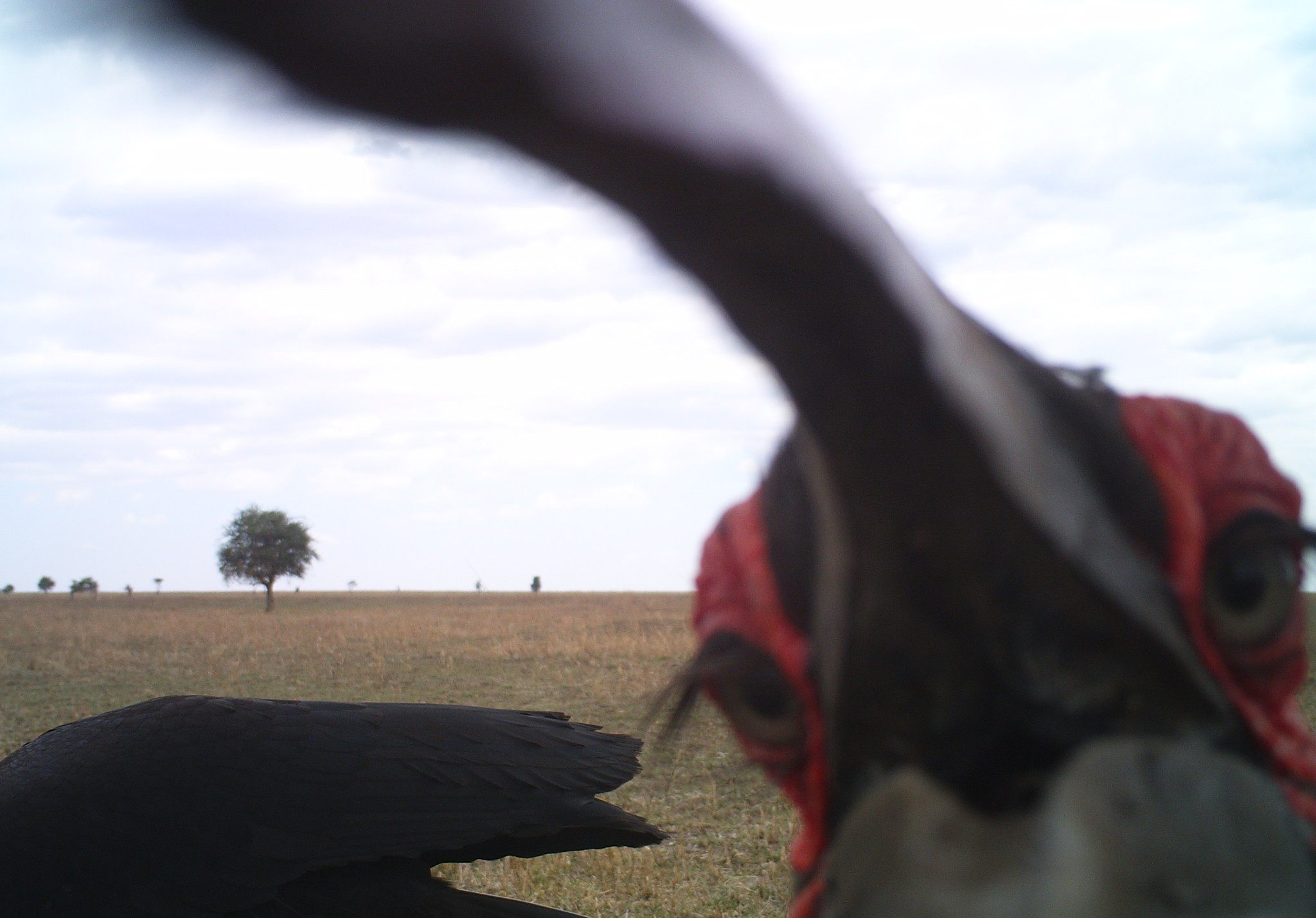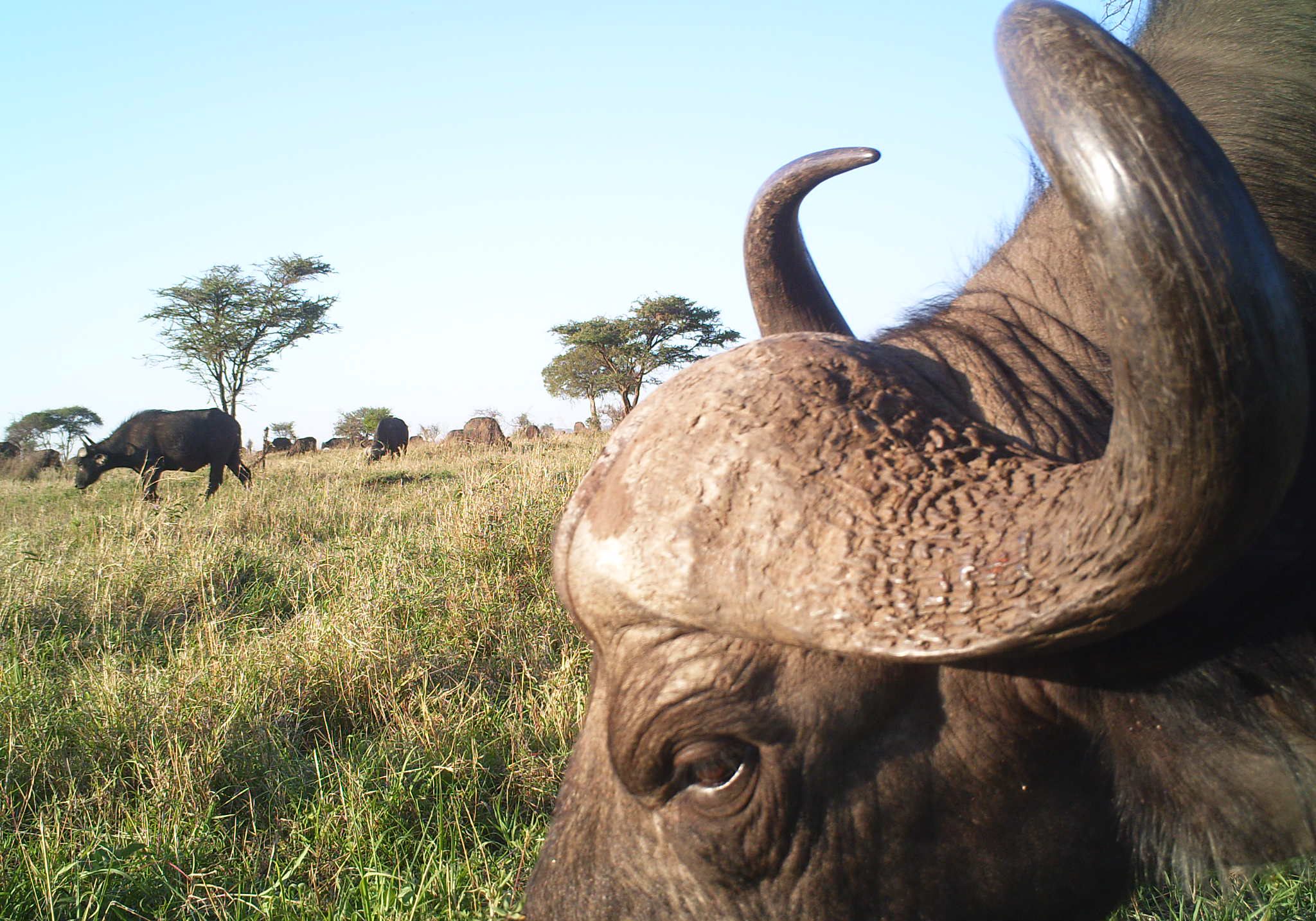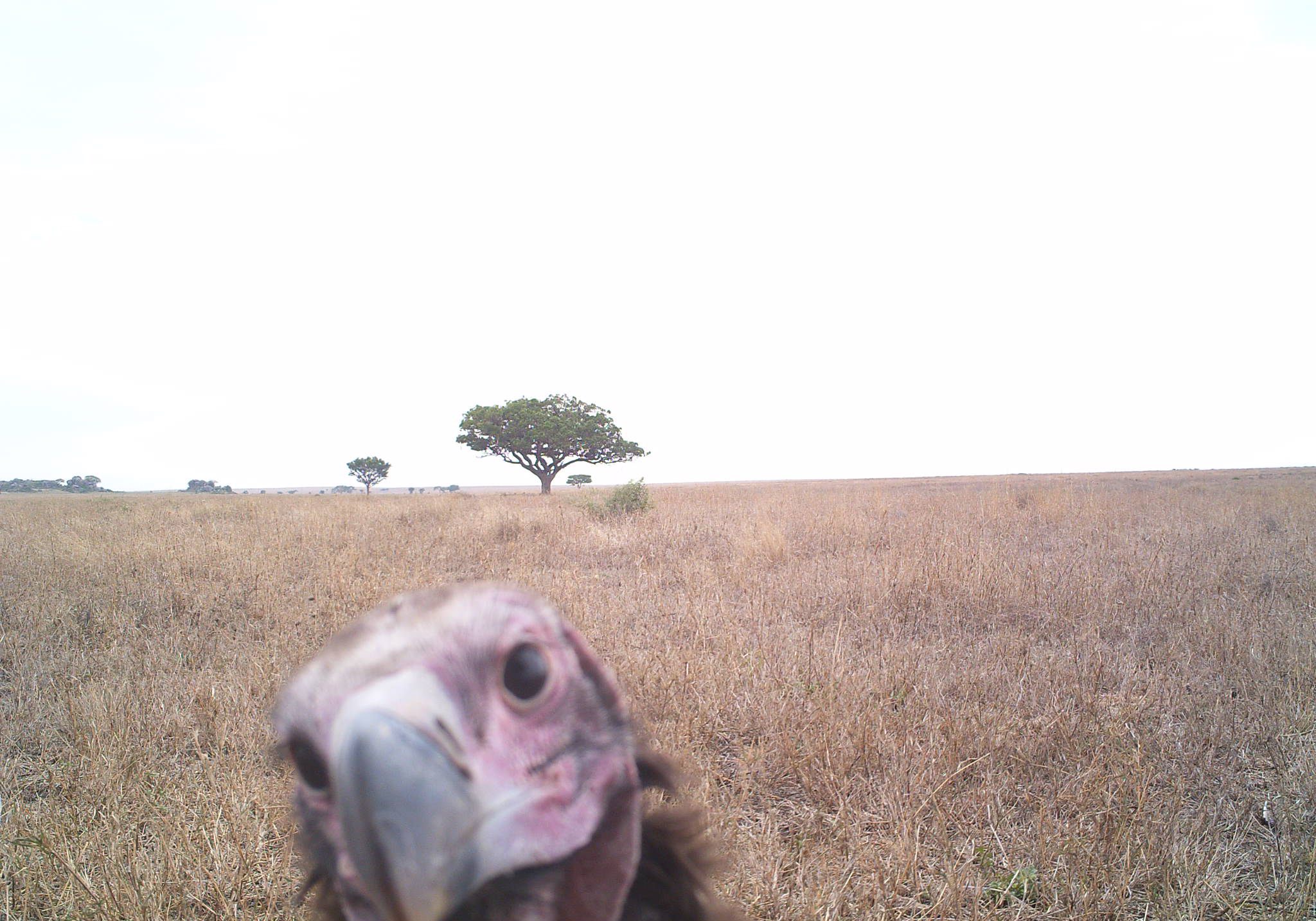Shooting Animals: The Surprising Legacy of Camera Traps
 A ground hornbill investigates a camera trap. (All photos: Snapshot Serengeti)
A ground hornbill investigates a camera trap. (All photos: Snapshot Serengeti)
Last week, the open-access journal Scientific Data released the first fuzzy, feathered fruits of the Snapshot Serengeti project. The project, which involved 225 camera traps evenly spaced throughout the plains and woodlands of Serengeti National Park, was the brainchild of Alexandra Swanson, a carnivore ecologist at the University of Minnesota. The traps, which are triggered by heat and motion, snapped away day and night for three years (or for as long as they survived—hyenas liked to gnaw on them, Swanson told The New Yorker). Swanson and her colleagues ended up with more than a million images, which were classified by tens of thousands of volunteers.
This experiment, though, has rewards that go beyond scientific study. Animal trap photos are merely the latest in a long line of human attempts to visually capture animals—the history of photography is built upon our attempts to better see the natural world.
It seems that when we look at animals, we think more about what it means to be human.

A zebra gets nosy.
The internet has made about a million slideshows out of Serengeti Snapshots. Together, they make a rich and surprising outdoor portrait hall—the photos are cute, frightening, ethereal, and dramatic, sometimes all at once. Each one offers a perspective that would have been unthinkable just a few generations back: viewers can look into a vulture’s probing eyes, or up the wet nose of a wildebeest. For scientists who study Serengeti ecosystems, they’re an undeniable game-changer. They’re also an opportunity for all of us to zoom in more closely on how we view animals, how those views have changed, and why.

If you were looking at this lion 200 years ago, he was probably the last thing you ever saw.
It can be hard to remember, in this age of cat photos and 24-hour eagle cameras, that we couldn’t always get so up close and personal with other creatures. Before the early 19th century, there were two ways for people to learn about wildlife: Through secondhand descriptions and illustrations, or by going into the wild themselves. This led to a certain view of the natural world—a view that has evolved and changed in tandem with photographic technology, says Professor Matthew Brower, who studies the subject at the University of Toronto.

A cape buffalo grazes for the camera.
“Photography has always had an interest in animals,” says Brower. Joseph Nicéphore Niépce, the inventor of photography, built the world’s earliest cameras out of cigar boxes and microscope lenses and tried to take pictures through the window of his workroom, which happened to overlook a dovecote. When his experiments worked, “I saw on the white paper the whole of the pigeon-house,” he wrote to his brother Claude in 1816. In his earliest surviving photo—“View from the Window at Le Gras,” from about a decade later—the dovecote is visible, though without any doves. “It takes quite a bit of time to register an image,” says Brower, “and so basically, things that move don’t show up.”

A cheetah lays claim to this camera.
This problem dogged aspiring animal photographers even as technology improved. In the early days, there was nothing snappy about a snapshot. “People wanted to interact with this new technology, and so they would submit themselves to all kinds of restraints to be able to have their picture taken,” Brower says. Humans would set aside whole afternoons to strap themselves into chairs with weird headrests, but animals weren’t interested. Even man’s best friend couldn’t sit and stay quite well enough, and people who really wanted pictures of their pets had to wait until they were asleep. (Or dead: ”It was not uncommon in the Victorian age to call upon a photographer to capture one, and oftentimes the only, portrait of a departed loved one,” according to Animal Image Photography).
All of this changed, legend has it, because of a bet. The 19th-century tycoon Leland Stanford made his money in the California Gold Rush and spent it on racehorses, which he trained at his farm in Palo Alto. He also bet a bunch of it on one question: does a running horse ever lift all four feet of its feet completely off the ground? (Some historians contest this version of the story, and say that Stanford only wanted to learn why horses are so fast, in order to make his even faster.) In 1877, he hired photographer Eadweard Muybridge to pinpoint exactly what happens when a horse gallops. Muybridge worked on this problem for nearly a year, commissioning special shutters and lenses and running the horses ragged on racetracks across California, until, in June of 1878, he found a solution—a 24-camera array, set up parallel to the track and controlled via wires tripped by the horse’s legs as it ran past. The resulting images of airborne horses “really changed the way we think about animals and how they move,” says Brower. They were also the first stage in the development of the movie camera.

An impala shows off his new digs.
This and other inventions, most notably the portable dry plate, inspired a rash of gung-ho nature photographers. They brought the new technology into the wild, chasing their subjects down with dogs, following them up into trees, and camouflaging themselves with hunting blinds in order to get more “natural” shots. The mix of physicality, artistry, and equipment required reminded its practitioners of another outdoor sport, Brower says, and a group of them “started advocating for photography as a form of hunting that they argue is superior… they said, ‘well, it’s much harder to sneak through the woods with a giant camera to capture an animal than it is to shoot them with a rifle from a great distance.’” Teddy Roosevelt saw the new trend as a way for Americans to stay active and woodsy without depleting game populations that were already stretched thin, saying, “Let us hope that the camera largely supplants the rifle.” Photography was like hunting in another way, too—flashes were still made of gunpowder, so each shot resulted in “a giant explosion of sound and light,” often scaring or scattering the subjects (although some photographers were so prolific that nearby animals adapted—renowned photographer George Shiras III swears that his local deer eventually stopped batting an eye.) Muybridge-style tripwires meant that these “camerahunters” could even set traps, bait them with cabbage, and see what happened.

Next, this vulture set up an online dating profile.
Their 2-D trophies, Brower said, helped transform how people saw nature. For one thing, a lot more people suddenly could—further inventions like halftone reproduction allowed photos to be published alongside text. Popular hunting journals, like Field and Stream and Forest and Stream, started including photos in their stories. Scientific journals followed close behind. In 1906, budding exploration magazine National Geographic published a special single-story issue, called “Hunting Wild Game With Flashlight and Camera,” that featured 74 of Shiras’s photographs. Several board members resigned in protest, complaining the magazine was becoming a mere “picture gallery,” but the public loved it. “Nobody had ever seen pictures like that of wild animals,” recalled editor Gil Grosvenor many years later. “I can’t exaggerate the enthusiasm with which they were received by our members.”

A hyena, washed out by the flash.
Scientists got on board too. The new tools allowed them to study animals in motion, in groups, and in their natural habitats, rather than examining one at a time on the vivisection table. In 1882, physiologist Étienne-Jules Marey built a “chronophotographic gun” that could shoot twelve frames per second and used it to show how cats always land on their feet. Ethology, the study of animal behavior, grew in popularity, as scientists began to use hunting and photography blinds for prolonged observation. The Serengeti Snapshots project is a direct legacy of these attempts.

One of these zebras isn’t taking this photo seriously.
All of these threads—visual detail, wide accessibility, broader knowledge—combined to create a brand new way of relating to wildlife. “The sense that there’s an animal life-world out there that we’re not part of is a very interesting and powerful one,” says Brower. “I think it underlies development of more ecological understandings about nature.” The American environmental movement began murmuring in the 1860s and 70s, and reared up in earnest in the early 20th century. It’s not hard to see how images like Shiras’s nightwatching bobcat or William Finley’s fragile bird nests might have helped to spur it, or to keep it going.

Is this thing on?
Brower thinks the Serengeti Snapshots, and other up-close camera projects, have caused our views to shift further. “I think people are becoming more comfortable with the sense that, actually, we are animals,” he says—that we have more in common with other creatures than even our most nature-giddy predecessors thought. When we glimpse a hornbill prodding curiously at the strange new box, “there’s a clear sense of interaction… it’s about the animal and its own agency,” rather than an artist’s composition or a camerahunter’s skill. Animals who engage in our new favorite pasttime can’t be too different from us. Then again, humans are probably the only creatures who can look at animal selfies and see, instead, ourselves.

A curious cheetah.
Naturecultures is a weekly column that explores the changing relationships between humanity and wilder things. Have something you want covered (or uncovered)? Send tips to [email protected].


























Follow us on Twitter to get the latest on the world's hidden wonders.
Like us on Facebook to get the latest on the world's hidden wonders.
Follow us on Twitter Like us on Facebook